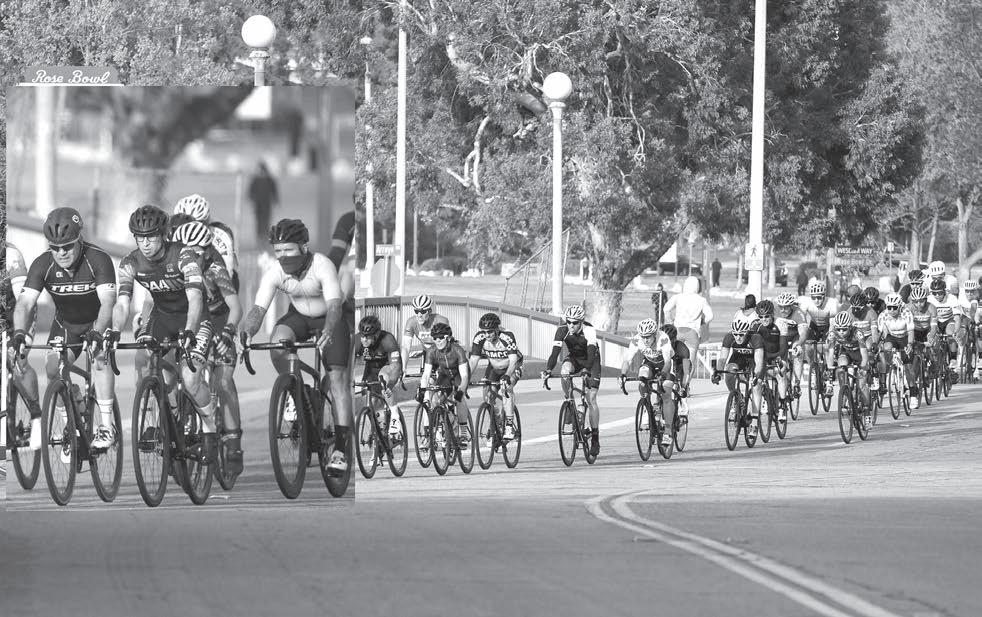16
Weekend
BALITA
Visit www.Balita.com
Business
Saturday-Friday | April 10 - 16, 2021
Economy sank deeper in 2020 than initial estimates — PSA MANILA (Mabuhay) — The economic fallout in 2020 resulting from the COVID-19 pandemic is worse than initially reported, revised estimates by the Philippine Statistics Authority (PSA) showed Thursday. Data released by the PSA showed the country’s economy as measured by gross domestic product (GDP)—the summation of all the goods and services produced by a country in a specified period—shrank by 9.6% last year, a deeper contraction than the -9.5% reported in January. In peso terms using current prices, the Philippines’ GDP amounted to P17.9 trillion, lower than the P19.51 trillion in 2019. This translates to an economic loss of P1.58 trillion last year due to mobility restrictions and business activity disruptions amid the global coronavirus pandemic. The PSA, meanwhile, maintained the -8.3% GDP for the fourth quarter of 2020. “These are due to the latest
full year data. We always update as needed if new data are available,” Acting Socioeconomic Planning Secretary Karl Kendrick Chua told reporters in a Viber group message. The PSA explained that revisions on the estimates are based on the updated data submissions by the data source agencies. “The PSA revises the GDP estimates based on an approved revision policy (PSA Board Resolution No. 1, Series of 2017-053) which is consistent with international standard practices on national accounts revisions,” it said. The revised GDP estimates came almost a month before the Statistics agency is scheduled to announce the first quarter 2021 economic output on May 11. The revised -9.6% GDP in 2020 is still the economy’s worst performance on record since the end of World War II. Chua earlier blamed the 2020’s economic contraction to COVID-19, which “disrupt-
Acting Socioeconomic Planning Secretary Karl Kendrick Chua
ed our growth momentum and development trajectory.” The Philippines first implemented the enhanced community quarantine (ECQ) in March 2020, which has been gradually eased in June all throughout the first two months of 2021. New COVID-19 cases saw a dramatic increase, hitting all-time highs in March. This prompted the government to place Metro Manila, Bulacan, Cavite, Laguna, and Rizal
Philippine manufacturing posts modest growth in March MANILA, Apr 5 (Mabuhay) — The Philippine manufacturing sector continued to expand in March, albeit at a slower pace than the previous month, according to results of the monthly survey conducted by IHS Markit. The IHS Markit Philippines Manufacturing PMI fell to 52.2 in March from 52.5 in February. The PMI is a composite indicator of the manufacturing sector's performance, with 50.0 as the threshold. A reading above 50 indicates growth while below 50 is a contraction. Goods producers reported a marginal rise in new order volumes for the month, while foreign client demand was subdued as restrictions linked to the COVID-19 pandemic persisted in overseas markets. IHS said an overall rise in new work led local firms to increase their output at an accelerated pace, while some noted efforts to stockpile finished goods amid expectations of greater demand in the coming months. "Nevertheless, a strong first quarter places the sector in a good stead for a return to industrial production growth in 2021, with our current forecast expecting a 7.1% expansion," said Patel. (MNS)
under enhanced community quarantine from March 29 to April 11. The reimposition of the strictest quarantine classification in the country’s economic center further dims hopes of a faster recovery from the pandemic-induced recession experienced last year. The two-week ECQ in the NCR Plus bubble is expected to shave off P30 billion or P2.1 billion a day in household incomes, and result in 252,000 job losses, and 102,000 more poor individuals for the entire duration of the strict lockdown. The National Economic and Development Authority earlier admitted that the country will continue to see a negative GDP in the first quarter of 2021. Asked if the revisions will affect the economic managers' target of 6.5% to 7.5% growth this year, Chua reiterated that it is too early as state economists and statisticians look at ongoing trends and not a single month's data. (MNS)
Indoor restaurants may remain closed — DTI chief
MANIL A (Mabuhay) — The Inter-Agency Task Force for the Management of Emerging Infectious Diseases (IATF) might be sensitive in reopening indoor economic activities, including indoor dine-in services, due to new variants of the coronavirus disease 2019 (Covid-19) in the country, Department of Trade and Industry (DTI) Secretary Ramon Lopez said on Thursday.
“So if we really reopen, the indoor restaurants --unless they can really do the engineering controls-they might be kept closed and only the outdoor activities will only be allowed,” Lopez said in a television interview. From nearly 2,000 daily cases at the start of the year, Covid-19 cases in the country in the past days even breached the 15,000-mark.
The high number of Covid-19 cases made the IATF to place National Capital Region and provinces of Bulacan, Cavite, Laguna, and Rizal under enhanced community quarantine (ECQ) from March 29 to April 11. “To us, this is already the alltime big-time lockdown,” Lopez said. “We also say that we cannot continue in ECQ for a long time.
NEW... from Page 1 boosting Philippine business, as well as promoting our culture and tourism,” Badajos continued, adding, “I am definitely eager to begin my work and meeting up with local movers and shakers, government officials and our kababayan community.” With CoViD-19 transmission largely under control in Los Angeles County and with CA Governor Gavin Christopher Newsom targeting mid-2021 to open up the State’s economy (given certain epidemiological metrics are met), the Consul General is hopeful that LA PCG may begin exploring activities beyond only virtual platforms. Prior to his arrival in L.A., ConGen Badajos served at the Philippine Consulate General in Jeddah from February 2018 to April 2021. A seasoned Filipino Diplomat, the Bangued, Abra native joined the Philippine Foreign Service in January 1997 and has served in various capacities at the Department of Foreign
Affairs in Manila, including most recently as Director, Political-Security Division, Office of ASEAN Affairs (2015-2018). Earlier, he was assigned to the Office of Legal Affairs, Office of Consular Affairs and the Office of Asian and Pacific Affairs. His previous foreign assignments include the Philippine Consulate General in Toronto as Vice Consul (2000-2003), the Philippine Consulate General in New York as Vice Consul then Consul (20032007), and the Philippine Embassy in Bangkok, Thailand, as Minister and Consul General and Deputy Permanent Representative to the United Nations Economic and Social Commission for Asia and the Pacific or UNESCAP (20092015). A University of the Philippines-educated lawyer by profession (UP College of Law, LLB 1991), the Consul General has also written a “Philippine Passport Guidebook” in 1998 together with a fellow Filipino Foreign Service Officer.
What we are looking at is a gradual movement, the reopening to (the) next level of sectors.” He added the current situation has hit hard entrepreneurs in tourism and food establishments, particularly indoor dine-in restaurants. “With the new restrictions, there are many businesses that will remain closed for the meantime, or
will really slow down their operations,” he said. Citing a survey of DTI, Lopez said closed businesses at the onset of the pandemic reached 38 percent “Over time when we were reopening, it went down to 6 percent then to 4.6 percent recently. Others have completely shut down or shifted to other business,” he added. (MNS)
ALL ACTS... from Page 1
ZOOMER... from Page 3
spoken out along with local government officials to help try and bring their communities together so that nobody has to endure or tolerate any type of hate period. Although COFACC, comprising of various Filipino American Chambers Of Commerce across the nation, they are also unified in their stance to denounce Asian Hate. Whether people have a business or not or are entrepreneurs by profession, we at COFACC stand in unity with our Asian brothers and sisters to ensure that Asian Hate will not be tolerated and any hate amongst all ethnicities is unacceptable.” “We look forward to the day where nobody has to live in fear of another human being. We strive as an organization to build bridges of connection and trust with open policies of acceptance regardless of race, religion, gender, sexual orientation, economic background, and political affiliation. COFACC believes in equal opportunity, equal rights, and most of all, equality of love and unity across all races as we are all equal in God’s eyes.”
we are one with you in prayer for a better and brighter 2021. “For all of our alumni watching, please do continue to pray for and support your alma mater, as this pandemic has been a tremendous challenge for the education sector. As of the 4th quarter of 2020, there were already more than 800 private schools in the country that had closed or stopped operation this school year due to the pandemic; many of which will no longer reopen. We are blessed to have established some form of stability, even in these difficult times. “Thank you once again to the PWUAA of Southern California for this invitation. May you all continue to stay safe and healthy, and I hope to meet you all in person when the situation is better! Thank you and God bless.”
22 MILLION... from Page 1 general medical, surgical or specialty hospitals; some two million at outpatient care centers and about 1.8 million worked at nursing care facilities. Health Care Occupations There were 9.8 million workers employed as health care technicians and practitioners, including physicians, surgeons, and registered nurses. About two-thirds were non-Hispanic White. Another 5.3 million worked as nursing assistants, home health and personal care aides and in other health care support occupations. One-quarter of health care support workers were Black. Women accounted for three-quarters of full-time, year-round health care workers. Women working as registered nurses, the most common health care occupation
for women, had median annual earnings of $68,509. In contrast, women working as nursing assistants, the most common health care support occupation, earned $28,686. Among full-time, year-round health care workers, more than half of paramedics, surgeons, and other physicians were men. Median earnings for men in selected health care occupations ranged from under $30,000 for home health aides to over $250,000 for emergency medicine physicians. Health Care Workers by State States with over 500,000 health care practitioners and technicians include California, Florida, New York, and Texas. However, the overall distribution of health care related workers varied by state. For example, there were about six health
care practitioners and technicians per 100 civilian-employed workers ages 16 and over in the United States. While about 58,000 workers in West Virginia were health care practitioners and technicians, they accounted for nearly 8 out of 100 of the state’s workers ages 16 and over. In the District of Columbia, 4 out 100 workers, or just over 17,000, worked as health care practitioners. The number and distribution of health care support workers also varies across the United States. California had 718,011 health care support workers — the largest number of any state — accounting for about 4 out of 100 workers in the state. In contrast, nearly 5 out 100 workers (454,514) in New York had health care support jobs. Nearly 2 out 100 workers (just over
23,000) in Puerto Rico worked in a health care support occupation. We used statistics from the 2019 American Community Survey to profile health care workers at the national and state level. Data.census.gov provides selected labor force statistics. ACS estimates are based on data from a sample of housing units and people. Therefore, respondents may or may not live and work in the same geographic location as their employer. Additional information on industry and occupational classifications is available from the Industry and Occupation Statistics Branch. Lynda Laughlin, Augustus Anderson, Anthony Martinez, and Asiah Gayfield are survey statisticians in the Census Bureau’s Industry and Occupation Statistics Branch.



